Some pet sellers haven’t realized that they have an important role to play in selling pet animals to first time owners. These first-time pet owners need congruent information that’ll make them successful keepers.
Thus, they rely on pet suppliers’ advice to purchase a pet animal and set out with the husbandry. The reality is that because of making sales, by all means, some pet sellers give out wrong and haphazard advice (information) to new pet owners.
You’re here because you’re at that stage of your journey to avoid common mistakes made by other beginner pet owners. This article has got you covered. There are tons of information in this regard you’ll see on the internet.
While most of this information are results of thorough research, very many are from experienced breeders themselves.
This article is born out of thorough research and the experiences of certified breeders. In this article, you’ll learn:
- All the common mistakes new pet snake owners make.
- Why do they make these mistakes?
- The effects of these mistakes on the animal, and
- The right thing to do. Keep reading and learn.
Contents
- What Are The Most Common Mistakes That New Pet Snake Owners Make?
- 1.) Not Learning Or Researching About The Pet’s Needs Before Purchasing It
- 2.) Purchasing The Pet Before Setting Up The Enclosure
- 3.) Over Handling The Snake
- 4.) Keeping Improper Temperature And Humidity Levels
- 5.) Housing Two Snakes Of Different Gender In The Same Cage
- 6. Wrong Feeding (Underfeeding And Overfeeding)
- 7.) Poor Husbandry
- 8.) Getting Worried Sick When The Snake Refuses To Eat Or Is In Shed
- 9.) Underestimating The Snake’s Ability To Escape
- 10.) Not Providing Enough Security Via Cage Accessories
- Wrapping Up
What Are The Most Common Mistakes That New Pet Snake Owners Make?
There are lots of mistakes new pet snake owners make, which can cause serious health issues to their snakes. Some of these mistakes stem from getting advice from wrong sources or not seeking out congruent information at all.
Caring for a pet snake can be elementary if you have the right information at your disposal. However, if you don’t have adequate knowledge of what they need and what it takes to raise them in captivity, you’re bound to make mistakes.
Reading this article will help you avoid any of these mistakes in your husbandry. But if you’re already a keeper and you’ve made some of these mistakes while caring for your snake, nothing to worry about because this article has the best tips to remedy it.
That said, let’s delve into the common mistakes in detail.
1.) Not Learning Or Researching About The Pet’s Needs Before Purchasing It

This is like saying not being responsible or well prepared for the snake you want to get. There are so many things that are taken into consideration when choosing a pet snake.
Such considerations include the longevity of the animal, its disposition, feeding habits, cost of purchase and maintenance, cage size and requirements, and many more.
Thus, if you don’t research the needs of the animal in great detail before even purchasing it, you’re bound to make mistakes that may cost the snake’s life.
Not learning and researching about the new snake one hopes to get as a pet before purchasing it, is one of the biggest mistakes made by new pet owners.
Why Do New Pet Snake Owners Make This Mistake?
The reason most new pet snake owners make this mistake is because they fail to pay attention to details. An informed person is a reformed person. Similarly, someone who isn’t informed is deformed.
Failure to do the necessary research on your animal’s needs will have a huge bad effect on your husbandry and the animal.
What Is The Effect Of This Mistake On Your Pet Snake?
As earlier stated, failure to do the necessary research will lead to you doing so many things the wrong way. One of the effects is that your snake will become stressed. Once your snake’s immune system is weakened, the animal will become sick and may die.
Hence, the correct thing to do is to read about the animal first. This doesn’t apply only to snakes but also to every other pet. Any wild animal you intend to bring home as a pet, ensure you research in detail about the animal’s needs and care.
2.) Purchasing The Pet Before Setting Up The Enclosure
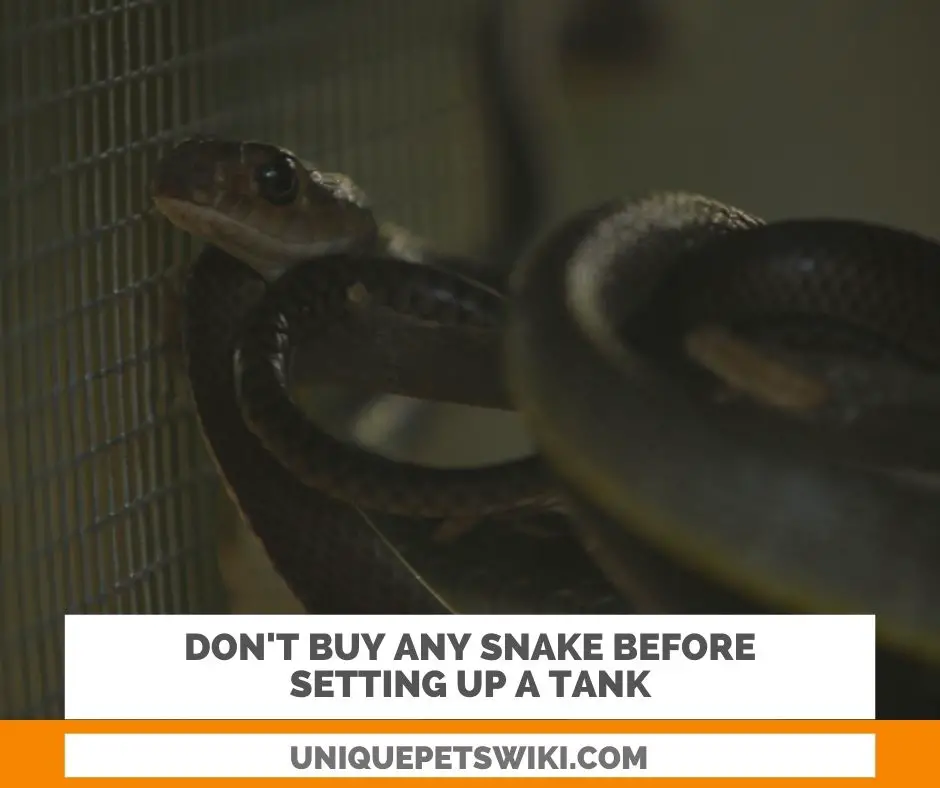
From your knowledge of what your snake needs you’ll be able to set up its enclosure. But some new pet owners go-ahead to purchase the animal first before setting up the enclosure.
Aside from learning about the animal’s needs, setting up its habitat to standard is the next crucial thing to do before bringing your pet home. Buying a pet without setting up habitat is like giving birth to a newborn without planning its crèche.
What Does This Means?
When it comes to the cage set up, there are different types of cages, sizes depending on the snake’s size and the accessories in the cage. Each species of snakes uses different cage sizes at different ages.
The same thing applies to heat and humidity. What seems to be constant among all snake species is that they need hides, water dishes, and soft bedding to burrow.
Why Do New Snake Pet Owners Make This Mistake?
Unfortunately, a lot of new pet snake owners don’t understand this. Thus, they get their pets first before planning to set up the cage. There’s a lot that goes into setting up a cage for your snake. It must be done to replicate the wild and minimize stress.
What Is The Effect Of This Mistake On Your Snake?
Snakes, like every other reptile, get stressed easily in captivity. As pets, it’s a stress that contributes most to their illnesses. The process of changing their environment and transporting them to your home is much of stress already for the snake.
In this case, it’s expected for the snake to be introduced to its cage so it can rest or get settled. However, when this didn’t happen, the snake got stressed out the more.
Coupled with the fact that your snake will not resume eating almost immediately in its new home until after a few weeks. This may lead to a loss of weight and a weakened immune system.
What Is The Right Thing To Do?
From what is said earlier, the importance of setting up the cage and making sure everything works fine can’t be overstated.
You must ensure that your new pet’s home is adequately set before transporting the snake home. Ensure to read our article here on the right cage set up for any species of snakes.
3.) Over Handling The Snake
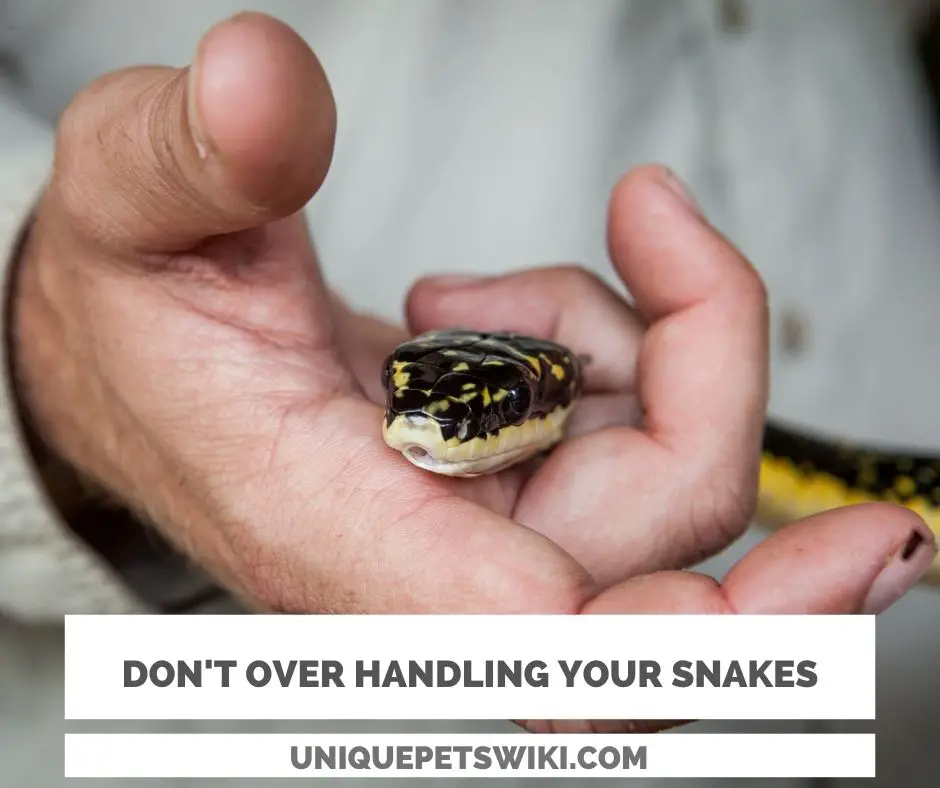
It’s a normal feeling to get over-excited about your new friend. I can recall when I had my first rabbit pet. I was obsessed with excitement such that I hardly passed a second without my pet on me.
To other pets like dogs, it’s okay to handle them even on their first day. But your pet snake is different. Snakes aren’t social animals. Hence, handling them too often and for longer hours per day is a problem for them.
Why many new pet snake owners make this mistake is because they get too excited about having their pets. Because of the excitement, they tend to handle the snake too often and for too long.
What Is The Effect Of This Mistake On The Snake?
Keep in mind that snakes get stressed easily. To your new pet who just got home, what your snake needs are rest and not handling. Once your snake settles in the new environment and has started accepting food, you can introduce handling.
But if you try to handle your newly purchased snake, you’re trying to compound issues for it. This is when you hear new pet owners saying that they got bitten by their snakes.
What Is The Right Thing To Do?
As I said, your new pet snake doesn’t need handling until it is fully acclimatized to the new environment. Even when your snake is fully settled, avoid handling it a few days after feeding.
Avoid handling your snake often, like two to three times a week. Avoid handling the snake for too long (that is handling it for several hours). The maximum period you should handle your pet is for 1-2 hours in a week.
Also, note that you’re not to visit your snake’s cage too often. You’re to open its cage only on the occasion of feeding, giving or changing its water, cleaning the cage, or handling, which may include taking it out for a bath.
4.) Keeping Improper Temperature And Humidity Levels
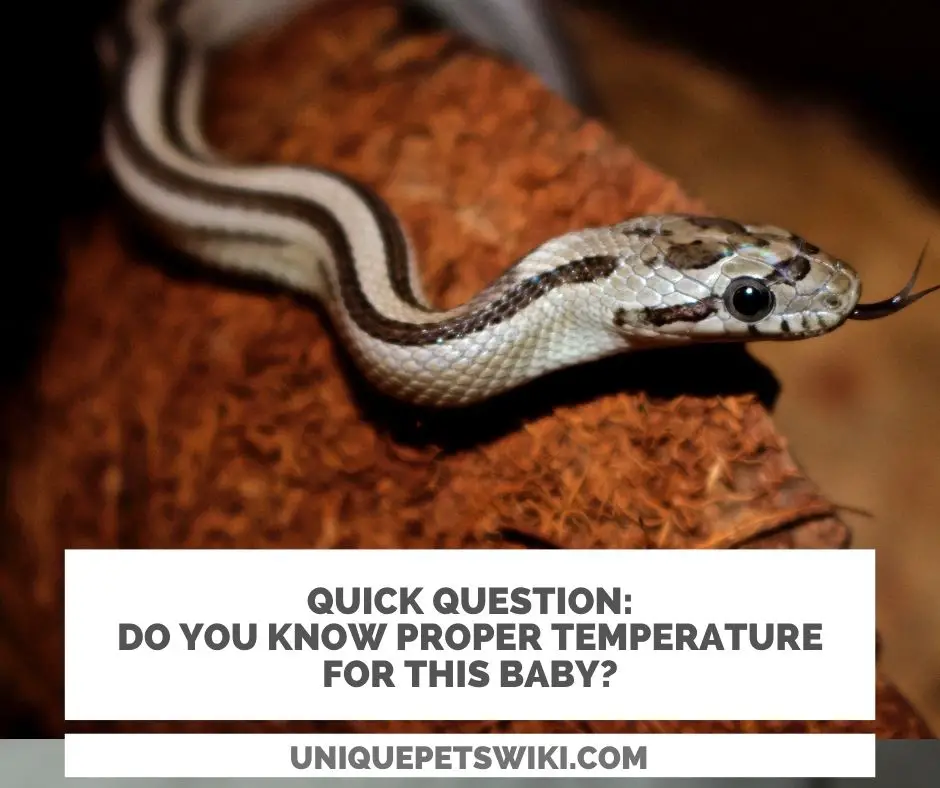
When it comes to the right temperatures and humidity, there are so many do’s and don’ts. Many writers on the internet have almost different levels to which they feel are the optimal temperature levels to be maintained.
May I add that your environment partly influences the temperature you may have to settle for and perhaps the location of the enclosure, what type of enclosure and heating sources that you’re using, and how powerful your heating mats or lamps are.
These factors will tell how high in the temperature you should go. Note that in the wild, some snakes don’t get exposed to the direct heat of the sun. For this reason, the temperature on the warm side will not be at the same level as all snake species.
This is because some snakes bask directly under the sun. Thus, if you have mulch or heavy substrates between the heat pad and your snake, the substrate will absorb some of the heat.
If your heating source isn’t powerful enough to warm to the top of the enclosure then your snake will have issues with digestion.
Since some snakes such as the ball pythons are ground dwellers, experts advised against using heat lamps or bulbs in their enclosure. The reason is that the heat lamp will only heat the top of the enclosure without sending a sufficient amount of heat to the floor.
Nonetheless, heat lamps aren’t entirely ruled out but must be used with caution. We advise you to use heat lamps only when you’re sure that it can emit the required heat to the floor. With the right temperature put in place, the humidity shouldn’t be compromised.
Why Do New Pet Snake Owners Make This Mistake?
Many mistakes relating to maintaining the right temperatures come as a result of ignorance or misinformation. As stated earlier, the enclosure type and size will determine what capacity of heating pad you should get.
In some other cases, keepers make this mistake because they purchased a substandard heating source.
Another reason is not having a thermostat in the cage to keep tabs on the temperature. Every heating and lighting bulb should be replaced every 6 months even though it’s still working.
This is because, after that period, the bulb will lose its efficiency and may not emit as enough heat that is required by the snakes. However, some new snake keepers either don’t know this or don’t consider it.
What Is The Effect Of This Mistake On The Snake?
Snakes are cold-blooded which means they rely solely on their environment to do a lot of things. As air is important to humans, so is a proper temperature important to them.
They depend on their external environment to regulate their body temperature, digest food, poop and shed. Failure to do any of these will cause serious health problems.
If the cage is too hot, it’ll cause serious burns. If it’s too dry, it leads to a retained shed. If the cage isn’t warm enough, it prevents it from digesting food and pooping. If the cage is too moist, it leads to the breed of bacteria and infections.
These are just a few to several issues that can result from improper cage temperatures.
What Is The Correct Thing To Do?
Getting a sick snake to see a vet is more stressful and expensive than preventing diseases. One effective way to prevent diseases is to have good husbandry. By this, I mean maintaining the correct temperature and humidity.
- For ball pythons, the temperature on the warm side shouldn’t go beyond 95ºF. When kept at this temperature, the humidity level shouldn’t drop beyond 60%.
- Boa constrictors are best housed in a cage with a temperature range of 85ºF – 90ºF. For boa constrictors, the humidity levels can go as high as 80%.
5.) Housing Two Snakes Of Different Gender In The Same Cage
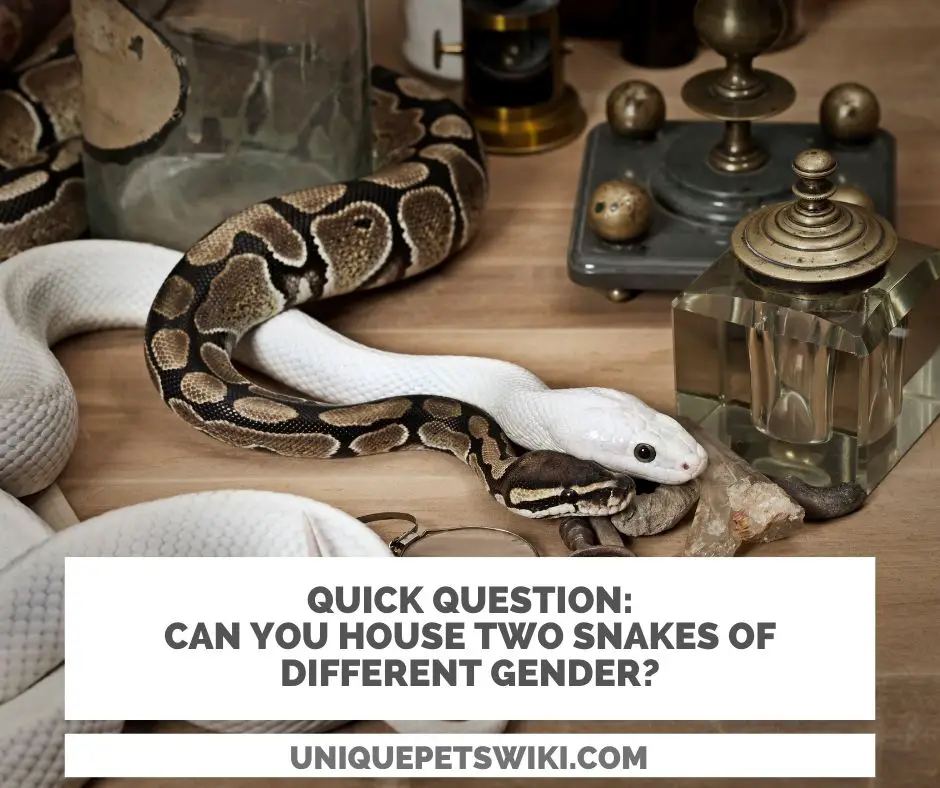
Pet snakes are docile, less aggressive, and hardly defend themselves. This doesn’t imply that when you house two snakes in the same cage, they won’t fight. Snakes aren’t social animals.
In the wild, they don’t occur in pairs or groups. Thus, when you put two snakes of different genders together, they’ll start fighting and defending themselves. In the process, the two snakes can injure each other.
If the snakes are not the same age and body size, the older snake can kill the younger snake.
Why Do New Pet Owners Make This Mistake?
Some new pet snake owners make this mistake because they’re unable to purchase a separate enclosure for their snake.
Some new pet snake owners keep other reptiles such as lizards keep their new snake pets together. This doesn’t seem right because both will injure themselves, and one will kill the other.
What Is The Effect Of This Mistake On The Snake?
As stated earlier, the two animals involved will not only get injured but may die. Aside from this, housing two animals aren’t ideal because they can easily get infected. If one of the animals is infected with either mites or bugs, it’s easy to pass it to the other animal.
Another effect on your snake is stress. When two snakes are housed together, they’ll likely fight. This will cause stress to the animals.
What Is The Correct Thing To Do?
As a good breeder, the best thing to do is house individual snakes in a separate enclosure. The only time you can house two snakes together is during breeding.
Only for breeding purposes should you bring together two snakes of the opposite sex. After the breeding season is over, return both snakes to their cages.
6. Wrong Feeding (Underfeeding And Overfeeding)
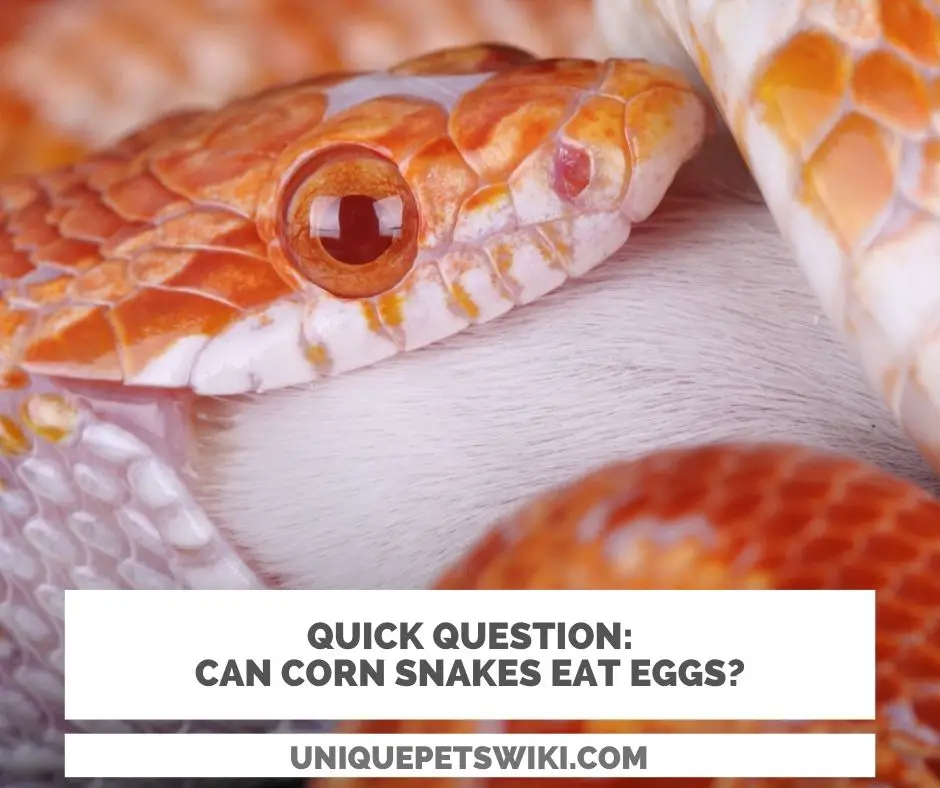
Wrong feeding includes feeding the snake the wrong size of prey or feeding the snake unsupervised. Pet snakes can only take prey items as large as the widest part of their body.
Some breeders use the size of the head to determine the size of the prey. When you feed your snake prey food smaller than their size, they get hungry again very soon. The truth is, feeding them a larger size prey may lead to regurgitation.
Another mistake new pet snake owners make is to miss feeding their snake. Snakes eat once every 5-7 or 10 days, depending on the age and size. If you make missing its meal a habit, then you’ll have issues feeding your snake.
The simple explanation is that the snake will get used to it. Aside from this, the snake will suffer malnutrition and begin to lose weight.
Feeding live rats to your pet snake is also wrong. The rat is likely to injure or kill the snake. In captivity, prey items are best offered pre-killed or frozen-thawed.
Some new pet snake owners make the mistake of giving their snakes cold prey. Snakes are cold-blooded animals. In the wild, they hunt by sensing the heat in their prey.
Besides, they can’t digest food without heat. Hence, when you feed them cold food when your temperatures aren’t optimal, they’ll have digestion issues.
What Is The Effect Of This Mistake On The Snake?
Aside from setting up a cage that replicates the wild, feeding your snake is the next important part of its care. How well you feed your snake will determine how healthy it is.
Therefore, when you make any of the aforementioned mistakes in feeding, your snake’s health will be affected. If the snake doesn’t have enough nutrients to build its immune system, it’ll get attacked easily.
What Is The Correct Thing To Do?
First, read in great detail to know what to feed your snake and what size. Once you know what to feed your pet snake, stick to it.
7.) Poor Husbandry

This includes using the wrong cage size, improper lighting, and cage accessories, not using a thermostat to regulate the heat, not weighing the snake regularly, not having the snake’s health history or records observing the snake for any health issues.
Many first-time snake owners make this mistake because they’re too busy to give proper attention to their snakes.
What Is The Effect Of This Mistake On The Snake?
A too-small cage for an adult snake won’t give it room to stretch and explore. An oversized cage for a small snake will be too wide if you can’t furnish it with accessories.
In either case, the snake will feel stressed. Without a thermostat on the enclosure’s warm side to monitor the temperature, the heat mat may overheat and cause serious burns to the snake.
Some snakes such as ball pythons are nocturnal animals. This means that in their natural habitat they aren’t exposed to sunlight or too much bright light. For this reason, lighting their cage will cause stress.
Furthermore, without weighing and keeping records of your snake’s weight, it’ll be difficult to know when something is wrong with your snake. Remember that earlier detection of diseases in pet snakes plays an important role in remedying it on time.
What Is The Correct Thing To Do?
A mistake in your husbandry can cost you thousands of dollars vet fee. To avoid this, ensure that you give your snake adequate attention and care.
Moreover, ensure that you evaluate your husbandry from time to time to know where there’s a problem.
8.) Getting Worried Sick When The Snake Refuses To Eat Or Is In Shed

There are many genuine reasons captive snakes will refuse to eat. Some of these reasons are breeding, shedding, and stress. Aside from sickness, these factors mentioned can make a pet snake refuse to eat.
All these factors are seasonal and don’t last forever. For example, your new pet will not eat until it has settled in a new environment. This may take 1-2 weeks or even a month. But once your snake starts eating, you wouldn’t have feeding problems again.
It’s a common scene to see new pet owners freak out when their pets refuse food for up to 2 or 3 times. With these reasons mentioned earlier, a snake can go without food for as long as 3 months.
If after a month or two, your snake still refuses to eat, check for other cage requirements such as the heat. It may likely be that the snake is stressed. However, if all housing conditions are appropriate, you can then see a vet.
Aside from panicking for not eating, new pet owners also freak out when their snake sheds for the first time.
Before and during shedding, the eyes and skin of your snake will change in color. This doesn’t mean that something is wrong with your snake. It’s normal. The eyes will usually become cloudy while the skin will turn pale or change in color entirely.
9.) Underestimating The Snake’s Ability To Escape
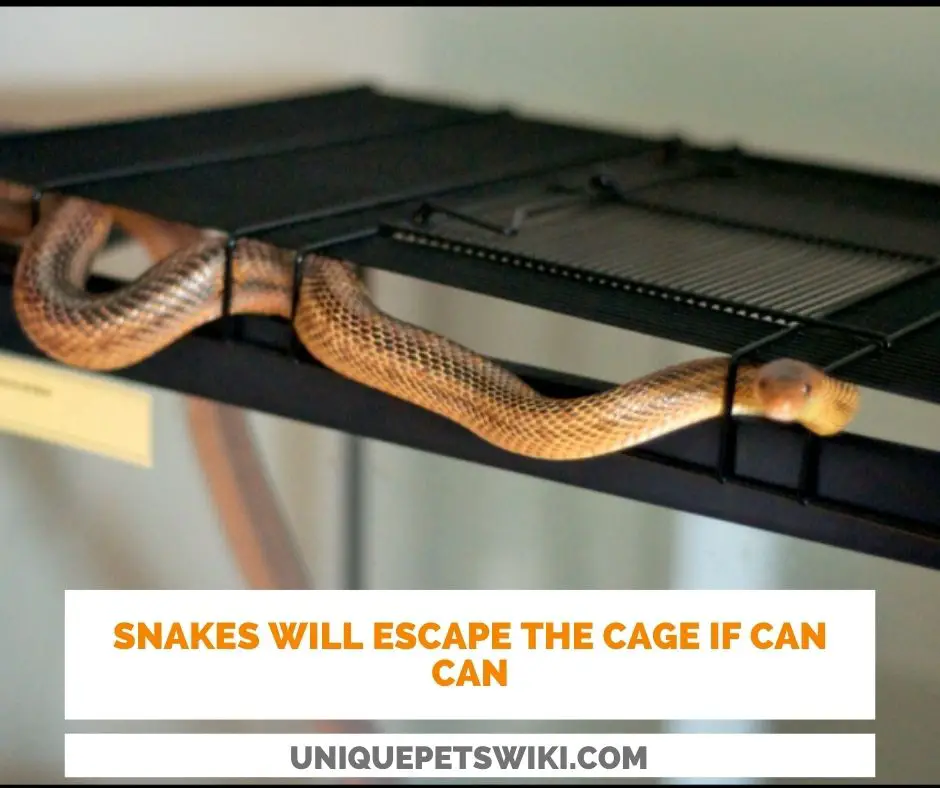
Ball pythons are premium escapers. So with other snake species. You wouldn’t know how good escape artists your snakes are until one gets out without your notice.
Some new pet snake owners don’t know that snakes can escape. They get cages with holes or openings simple enough for the snake to figure out how to escape. Snakes don’t need ventilation to survive. The humidity, if kept at appropriate levels, is enough.
Sometimes it may be a lid that isn’t well-fastened to the cage. In some other cases, if the snake is big it can use its body to push open the lid and escape.
As reported by a keeper, Jonathan Crowe, his snake Baird rat snake, could pop open its cage lid to escape when its owner caught it.
What Is The Right Thing To Do?
Ensure that you get your snake a secure cage that’ll be difficult for the snake to escape.
10.) Not Providing Enough Security Via Cage Accessories
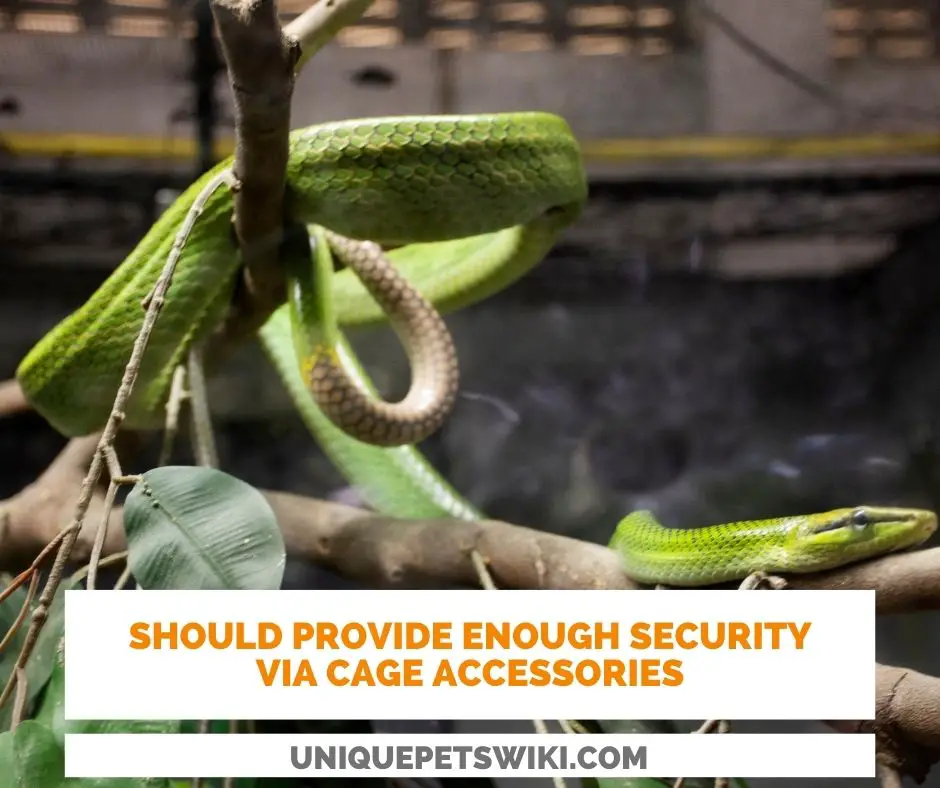
Most first timekeepers think that to keep a snake means getting a cage and putting just a few things. The goal of a good keeper is to make the cage replicate the wild.
This will include providing lots of hides, plants, logs for climbing, and so on. For the nocturnal species, their cage should be set to near darkness with little or no lighting.
Some keepers make the mistake of proving too small hides or too big hides. The proper size of hides for snakes will cover them securely without leaving any part of their body out. At the same time, it shouldn’t be too tight and shouldn’t be too wide.
Wrapping Up
It’s pathetic that despite the abundance of information on how to care for pet snakes, new pet owners still make some mistakes in their husbandry.
Unlike mammals, reptiles have specific care requirements. To make this even more specific, what a particular species of snakes require vary from other snake species.
While some snake species may require very hot temperatures with low humidity, other species will be fine under low temperatures and high humidity.
Thus, your duty as a good keeper is to do thorough research to find out what your species of snake needs.
Knowing what your snake needs and the best ways to care for your snake will make you a good keeper. Besides, this information is very important in your care as a pet snake owner.
